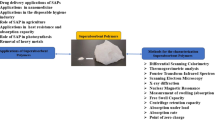Abstract
Quaternary ammonium amphoteric surfactants have been found in the past to be excellent lime soap dispersing agents and detergents but exhibit unusual solubility behavior. In search of a relationship between chemical structure and surface-active properties, compounds having the following general formula were synthesized: ZN+(CH3)2(CH2)nX−, where Z is C12H25-, C14H29-, C16H33-, or C15H31CONHC3H6-, n is 2, 3, or 4 and X is SO3- or OSO3-. Tertiary amines were converted to sulfobetaines (X=SO3-) by reaction with (a) butanesultone (n=4), (b) propanesultone (n=3), or (c) sodium 2-bromoethanesulfonate (n=2). An alternate synthesis for the sulfoethylbetaines (n=2) involved the reaction of the tertiary amines with ethylene bromide, followed by treatment with sodium sulfite. All sulfated quaternary ammonium compounds (X=OSO3-) were synthesized by treatment of the tertiary amine with the appropriate chloroalcohol, followed by sulfation with chlorosulfonic acid. The sulfated quaternary ammonium amphoterics are stable to acid hydrolysis, and alkaline stability improves with increasing bridge chain length. Sulfoethyl amphoterics are less water soluble than sulfobutyl, which in turn are less soluble than sulfopropyl derivatives of the same alkyl chain length. For the most part, the sulfated amphoterics are insoluble but are solubilized by soap. The lime soap dispersing properties improve as the carbon chain bridge length increases for both the sulfates and sulfonates. Formulations of tallow soap, amphoteric surfactant, and sodium silicates gave good detergency in most cases.
Similar content being viewed by others
References
Parris, N., J.K. Weil, and W.M. Linfield, JAOCS 50:509 (1973).
Parris, N., J.K. Weil, and W.M. Linfield, Ibid. 53:60 (1976).
Barnhurst, J.D., J. Org. Chem. 26:4520 (1961).
Snoddy, A.O., in “Organic Syntheses Collective Volume,” Vol IV, Edited by Norman Rabjohn, John Wiley & Sons, New York, NY, 1963, p. 529.
Helberger, J.H., and H. Lantermann, Justus Liebigs Ann. Chem. 586:158 (1954).
Staff, D., and R.M. Hixon, in “Organic Syntheses Collective Volume,” Vol II, Edited by A.H. Blatt, John Wiley & Sons, New York, NY, 1943, p. 571.
Weil, J.K., A.J. Stirton, and E.A. Barr, JAOCS 43:157 (1966).
Weil, J.K., N. Parris, and A.J. Stirton, Ibid. 47:91 (1970).
Démarcq, M., and D. Dervichian, Bull. Soc. Chim. Fr. 12:939 (1945).
Borghetty, H.C., and C.A. Bergman, JAOCS 27:88 (1950).
Hikota, T., Bull. Chem. Soc. Jpn. 43:2236 (1970).
Author information
Authors and Affiliations
About this article
Cite this article
Parris, N., Weil, J.K. & Linfield, W.M. Soap-based detergent formulations: XVIII. Effect of structure variations on surface-active properties of sulfur containing amphoteric surfactants. J Am Oil Chem Soc 53, 97–100 (1976). https://doi.org/10.1007/BF02635957
Received:
Published:
Issue Date:
DOI: https://doi.org/10.1007/BF02635957




